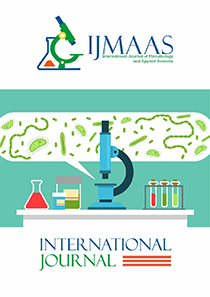Prevalence of Cryptosporidium parvum and Other Enteropathogens among Children with Diarrhoea in Benin City, Nigeria
Vol 4, Issue 2, 2025
KEYWORDS
Patients, Feces, Diarrheal and Non-diarrheal, Cryptosporidium, Enteropathogens, Oral Rehydration.
Abstract
Fecal samples from one hundred and fifty eight (158) patients of which one hundred and thirty eight (138) were diarrheal patients and twenty are non-diarrheal persons which served as control were examined microscopically for Cryptosporidium oocysts in a year-long prospective study at nine (9) different hospitals in Benin City. Cryptosporidium oocysts were detected in 43(31.2%) of 138 diarrheal patients other pathogens included cysts of Entamoeba histolytica (8.7%), and Giardia lambia (5.8%), ova of Ascaris lumbricoides (8.0%) and hookworm (2.2%), Escherichia coli (16.7%), and Salmonella typhi (2.9%). but were undetectable in 20 non-diarrheal controls between August, 2002 and October, 2003. In 19 (44.19%) of 43 positive patients, no other enteropathogens where detected. However there was no significant percentage different with oocyts isolated among the age groups (P˃0.05). The percentage distribution of common pathogens in relation to the total number of isolated pathogens in the diarrheal patients indicate Entamoeba histolytica having 11.5%, Giardia lambia 7.7%, Cryptosporidium oocysts 41.3%, Escherichia coli 21.1% Salmonella typhi 3.9%, Hookworm 2.9%, and Ascaris lumbricoides (10.6%). Generally a higher number of cases were detected during the rainy month than the dry season. Diarrhea continued for ˃14days (persistent diarrhea) in 4 of the 19 cases. Almost all the patients recovered with oral rehydration. A level of personal hygiene should be maintained and this can be achieved through health education and outreach campaigns.
Current: Vol 4, Issue 2, 2025

Call for papers
The International Journal of Microbiology and Applied Sciences warmly welcome your valuable articles for publication.
